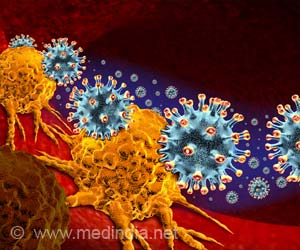A report has suggested that cancer risk for people exposed to radioactive tritium, commonly discharged in large amounts by civil and military nuclear plants around the world
A report has suggested that cancer risk for people exposed to radioactive tritium, commonly discharged in large amounts by civil and military nuclear plants around the world, may be more dangerous than previously thought.
The expert report for the UK government's Health Protection Agency (HPA) concluded that the cancer risk for people exposed to tritium may be double than that was assumed earlier.The report also suggests that there needs to be a grip on the international safety standards so as to put pressure on nuclear plants to cut their emissions.
One of the report's authors from Imperial College in London, Mark Little, stressed that even amongst nuclear workers with the highest exposures, the risks are still low.
However, he emphasized that, the evidence that tritium causes more biological damage than assumed is "solid enough" to justify a change. Tritium – a radioactive isotope of hydrogen with a half-life of 12.3 years – is an essential component of the Hydrogen bomb and a waste product of the nuclear power industry. It is also widely used in medicine, and would help fuel future nuclear fusion reactors, if they ever become viable.
Vast quantities of tritium have been released into the environment from numerous nuclear plants, including Savannah River in the US, Sellafield in the UK, Marcoule in France, and Ontario Power Generation in Canada, since the 1950s.
Also at Aldermaston in England and Mayak in Russia, workers are known to have been exposed to tritium. But it has been argued by the 100-page report from the HPA's Advisory Group on Ionising Radiation, that the weighting factor used by the International Commission on Radiological Protection (ICRP) in Stockholm, Sweden, to assess risks should be increased from one to two.
Advertisement
The health risks of tritium were investigated in response to a recommendation in 2004 from the UK government’s former Committee Examining Radiation Risks of Internal Emitters (CERRIE).
Advertisement
He added: "In the meantime the industry can no longer assume it will be allowed to release large quantities of tritium." The Nuclear Decommissioning Authority, which is responsible for many of the tritium-emitting plants in the UK, promises to "consider carefully the impact of any agreed increase in radiation weighting."
"We will look at this, and we will be considering it,” said the ICRP's scientific secretary, Jack Valentin.
Source-ANI
LIN/P






